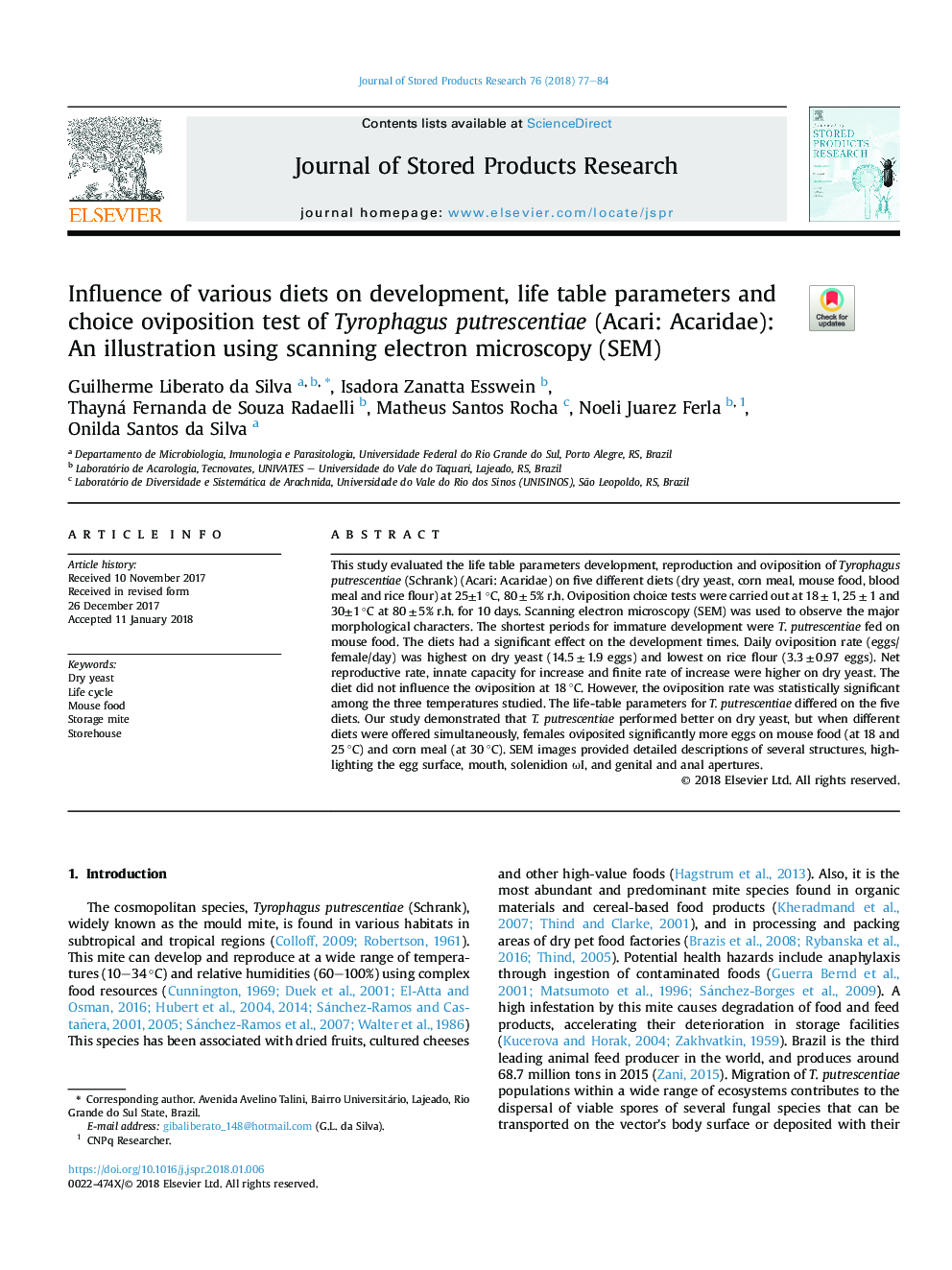| Article ID | Journal | Published Year | Pages | File Type |
|---|---|---|---|---|
| 8881674 | Journal of Stored Products Research | 2018 | 8 Pages |
Abstract
This study evaluated the life table parameters development, reproduction and oviposition of Tyrophagus putrescentiae (Schrank) (Acari: Acaridae) on five different diets (dry yeast, corn meal, mouse food, blood meal and rice flour) at 25±1â¯Â°C, 80â¯Â±â¯5% r.h. Oviposition choice tests were carried out at 18â¯Â±â¯1, 25â¯Â±â¯1 and 30±1â¯Â°C at 80â¯Â±â¯5% r.h. for 10 days. Scanning electron microscopy (SEM) was used to observe the major morphological characters. The shortest periods for immature development were T. putrescentiae fed on mouse food. The diets had a significant effect on the development times. Daily oviposition rate (eggs/female/day) was highest on dry yeast (14.5â¯Â±â¯1.9 eggs) and lowest on rice flour (3.3â¯Â±â¯0.97 eggs). Net reproductive rate, innate capacity for increase and finite rate of increase were higher on dry yeast. The diet did not influence the oviposition at 18â¯Â°C. However, the oviposition rate was statistically significant among the three temperatures studied. The life-table parameters for T. putrescentiae differed on the five diets. Our study demonstrated that T. putrescentiae performed better on dry yeast, but when different diets were offered simultaneously, females oviposited significantly more eggs on mouse food (at 18 and 25â¯Â°C) and corn meal (at 30â¯Â°C). SEM images provided detailed descriptions of several structures, highlighting the egg surface, mouth, solenidion ÏI, and genital and anal apertures.
Keywords
Related Topics
Life Sciences
Agricultural and Biological Sciences
Agronomy and Crop Science
Authors
Guilherme Liberato da Silva, Isadora Zanatta Esswein, Thayná Fernanda de Souza Radaelli, Matheus Santos Rocha, Noeli Juarez Ferla, Onilda Santos da Silva,
